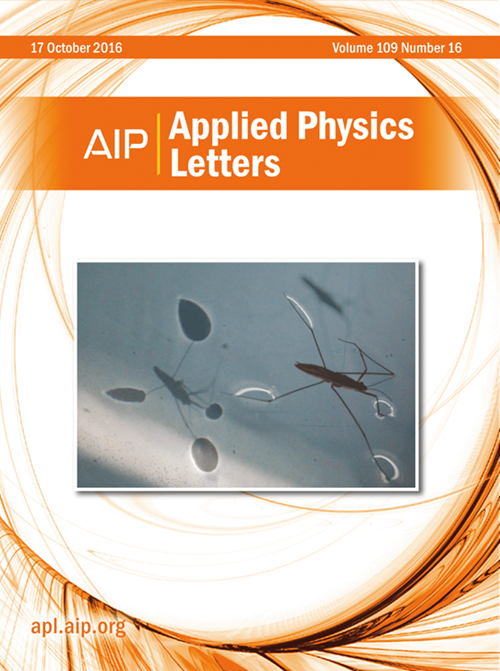Strain-driven anomalous thickness dependence of interfacial thermal conductance between dissimilar metals
IF 3.5
2区 物理与天体物理
Q2 PHYSICS, APPLIED
引用次数: 0
Abstract
Understanding thermal transport behaviors across dissimilar metal films is essential for optimizing electronic devices' performance and efficiency. However, the effect of interfacial parameters such as the thickness on interfacial thermal conductance (G) of metal/metal remains elusive. In this Letter, the G between Al and Cu with varying Cu thickness was investigated from 78 to 295 K using the time domain thermoreflectance technique combined with nonequilibrium molecular dynamics (NEMD) simulations and the diffuse mismatch model (DMM). The temperature dependence of GAl/Cu follows a pattern that is consistent with phonon-related thermal transport behaviors and decreases with increasing Cu thickness. The phonon related behaviors are attributed to the existence of the oxide layer at the interface. By taking the oxide layer into account, NEMD and DMM calculations match well with the experimental results, proving that the oxide layer hinders electron transport across the interface. We further find that strain distributions in Cu layers have a negative correlation with Cu thickness. When applying compressive strain on Cu, the overlap of phonon density of states between Cu and Al increases, especially for phonons of 6.5–9 THz, which is responsible for the Cu thickness-dependence in GAl/Cu. Our results not only help revealing strain effect on G but also pave the way for the thermal design of metal interconnect in integrated circuits.求助全文
约1分钟内获得全文
求助全文
来源期刊

Applied Physics Letters
物理-物理:应用
CiteScore
6.40
自引率
10.00%
发文量
1821
审稿时长
1.6 months
期刊介绍:
Applied Physics Letters (APL) features concise, up-to-date reports on significant new findings in applied physics. Emphasizing rapid dissemination of key data and new physical insights, APL offers prompt publication of new experimental and theoretical papers reporting applications of physics phenomena to all branches of science, engineering, and modern technology.
In addition to regular articles, the journal also publishes invited Fast Track, Perspectives, and in-depth Editorials which report on cutting-edge areas in applied physics.
APL Perspectives are forward-looking invited letters which highlight recent developments or discoveries. Emphasis is placed on very recent developments, potentially disruptive technologies, open questions and possible solutions. They also include a mini-roadmap detailing where the community should direct efforts in order for the phenomena to be viable for application and the challenges associated with meeting that performance threshold. Perspectives are characterized by personal viewpoints and opinions of recognized experts in the field.
Fast Track articles are invited original research articles that report results that are particularly novel and important or provide a significant advancement in an emerging field. Because of the urgency and scientific importance of the work, the peer review process is accelerated. If, during the review process, it becomes apparent that the paper does not meet the Fast Track criterion, it is returned to a normal track.
 求助内容:
求助内容: 应助结果提醒方式:
应助结果提醒方式:


